The history of the legendary JBL sound in the audio world and today
James Barro Lansing was born on January 14, 1902 in Green House, Neil Wu District, McPherson County, Illinois, USA. The name on the birth certificate is James Martini. Father Henry Martini, born in St. Louis, Missouri, and mother Margaret (Grace) Elbes Martini, was born in Sentul, Illinois. Old Martini is a coal mining engineer. Because of the fluid nature of this work, young Lansing had to move with his father. The old Martini had a total of 14 children (one of whom died unfortunately), and Lansing ranked 9th among them. Lansing lived with the Barrow family in Richfield, Ill., for a short time. Later, when he changed his surname from "Martini" to "Lansin", he added "Barrow" in the middle of the name.
We don't know much about Lansing's early career. We have to thank Bill Martin, one of Lansing's three brothers, for providing a lot of information. Lansing graduated from Lawrence School in Springfield, Ill., and then entered the high school in Springfield. Since then, I have studied at a small local business school.
Young Lansing is interested in all electronic and mechanical gadgets. At about 10 years old, he made a Leiden battery to tease his playmates. He also makes ore radios. At about 12 years old, he also built a broadcast transmitter based on a sketch. The signal strength of this transmitter can be directly reached to the Great Lakes Naval Station in Illinois; the military later found the radio source set up by Xiao Lanxin and dismantled it in time.
For a time, Lansing worked as a mechanic and specialized in precision engines. Under the sponsorship of his Springfield employer, he also entered the Auto Mechanics School in Detroit.
Lansing’s mother died at the age of 56 on November 1, 1924, when Lansing left the home. We believe that he went directly to Salt Lake City. Grenada Peterson, who later became Mrs. Lansing, told us that she met Lansing in Salt Lake City in 1925. At that time he worked as an engineer on the local radio. At the same time, he also worked for Baldwin Speakers in Salt Lake City for a while. In Salt Lake City, he also met the later partner Ken Decker.
This is a small mining town with a population of only 300. It was built in 1894 and residents are mostly employees of nearby coal mines. There are 65 houses in the town, including one school, one post office and one shop. Most of them are painted in bright green, which is also the origin of the town name of Green House. In 1923, with the closure of the coal mine, the town residents moved out. In 1930, the town was abandoned. There is only one abandoned farmhouse left in the area.
Lansing Manufacturing Company
On March 9, 1927, Lansing and Decker partnered in Los Angeles, California to register a commercial horn factory called "Lansing Manufacturing Company", which produces horns for radios and floor-standing radios. Prior to this, James Martini changed his name to James Barro Lansing. We don't know why he changed his name to "Lansing", and most of his brothers simply changed their last name to "Martin."
In 1930, Bill Martin joined his brother's company from his hometown. Later, another brother, George, joined in. In 1930, Lansing Manufacturing had only 40 employees. Early products include the reed horns that are now in the museum, as well as speakers that use traditional excitation horns and early permanent magnets.
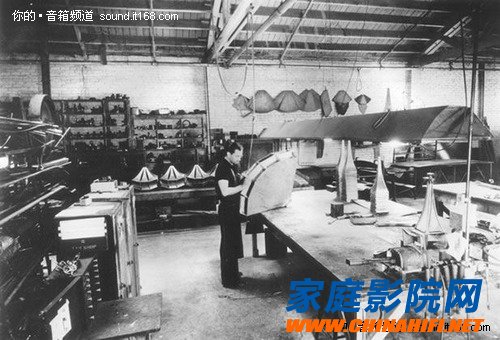
â–²Multi-number horns being processed in No. 6900 McKinley Street
This is really a workshop-style business. Family members make cones and coils at home every night, and the parts are sent for assembly the next day. At the time of the Great Depression, the company’s business was very difficult. Most of Lansing's customers are radio manufacturers, many of which are located in the Midwest. The company's products are mainly 8-inch and 6-inch speakers, as well as a small number of large-caliber speakers for luxury floor-standing radios. The company will eventually be headquartered at 6900 McKinley Street in South Los Angeles.
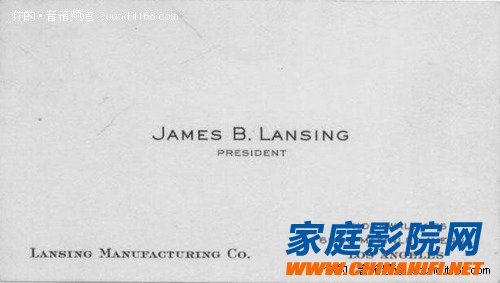
â–² James B. Lansing's business card during McKinley Street
The success of the "Jazz Singer" in the 1920s made sound movies a new standard in cinemas. Xidian, a manufacturing company of AT&T, has been a leader in this field for many years. Bell Labs has also invested heavily in researching recordings, replays, and other related art issues, so they can provide product manufacturers with the technology they need in a very short time. Xidian has even set up a distribution company, Electric Research Products Company (ERPI), to provide services for the film industry.
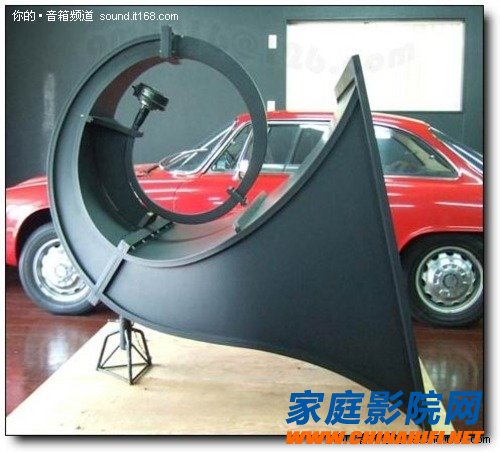
â–² WE555 compression driver loaded with WE15a
The early Xidian Theater speakers were designed with a single exponential full-range design with a large exponential curve horn, using the West Electric WE555 drive. The frequency response is very limited, covering the frequency domain from approximately 100 Hz to 5000 Hz. Later, to expand the high and low frequencies, Xidian added a high frequency unit and a woofer array. The bass section is rear-open, using multiple Jensen 18-inch woofers, and the high-pitched section uses the "Bostwick" treble. Since 1931, this enhanced system has been in use.
The recording department of MGM Studios is not satisfied with the enhanced audio system of Xidian. In particular, they pointed out that the horn that is 12 feet long in the midrange is not only too long, but also causes a relatively high time delay of its relatively high and low frequency. Another option at the time, the RCA system, was not even as good as the West's three-way system, which used an 8-inch cone drive and a straight horn.
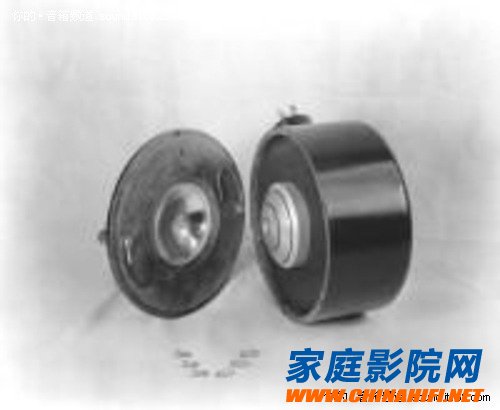
â–² Lansing Manufacturing's 284 compression driver
In 1933, Douglas Sherge, the leader of the MGM recording department, proposed to design a speaker system. He recruited young electrical engineer John Healey Iliad and graphic designers Robert Stevens (later he founded the Stroop Steven Sony Corporation) to help him complete the plan. John Blackburn, who graduated from the Physics Department of the California Institute of Technology, suggested to Hiliya that MGM recruit Lansing to make the components for the speaker system. In 1936, the system was officially launched under the name "Sherge horn system" and won the Oscar Award for Excellence in Technology. This is a two-way system that has much in common with the early speaker systems designed for auditory experiments at Bell Labs. The Sherge system uses a multi-grid-loaded Lansing 284 drive at high frequencies with a ring-slot phase plug. The low frequency part of the system consists of a huge W-barrel and several 15-inch bass drives that are rear-loaded. The voice coils of the high and low frequency drivers are all 3 inches in diameter, except that the high voice coil is wound with a flat wire and the woofer is wound with a round wire.
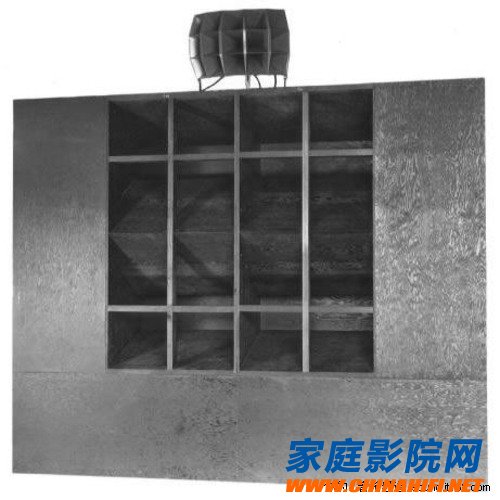
â–² Lansing Manufacturing Company Edition Sheer Hot Horn Speaker
There is no doubt that MGM's Scherrer speaker system sets a new standard for theater sound. Its original design was soon followed by many manufacturers around the world; RCA and Xidian also followed the basic ideas of the Cheryer system in their later speaker systems.
Xidian did not allow Lansing to use the design of the ring-slot phase plug, and West Electric applied for a patent. To avoid this problem, John Blackburn and Lansing changed the phase plug to a radial slit and used it on the 285 drive. Later, Blackburn came up with a way to add text to avoid the patent of Xidian's ring.
Another important product that Lansing designed for the film industry is Iconic. This two-way small system uses a 15-inch woofer, a 801 small high-frequency driver (the Alnico-magnet version is the familiar Altec 802), and a Small multi-grid horn. The Iconic system is widely acclaimed as a monitor speaker in the film industry, and many modern two-way monitoring systems have only made a few improvements in this early system.
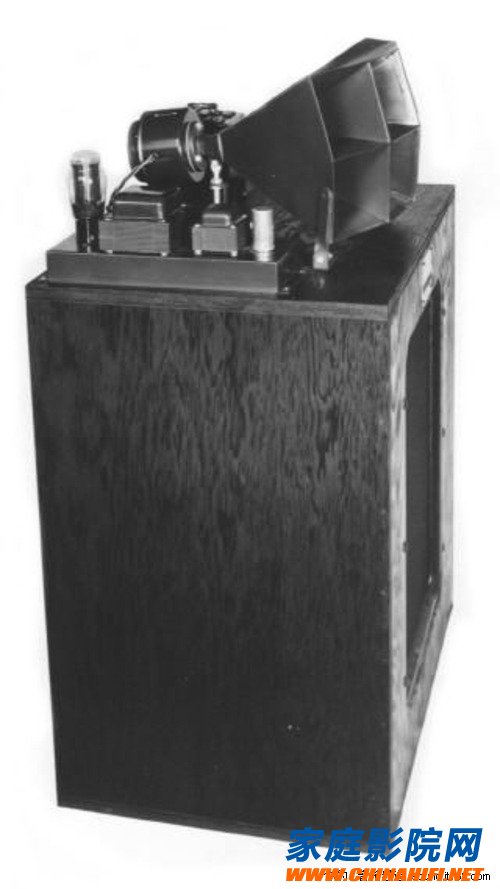
â–²Ixic speaker of Lansing Manufacturing Company
The US government noticed that Xidian Company formed a substantial monopoly in the film recording industry, forcing Xidian to sell all its shares related to recording-related business. In 1938, Xidian signed an agreement to sell the shares of ERPI to a group of engineers working at the company. Altec was born: the name is an abbreviation for All Technical. The main heads of the new company are George Carrington and EL Conroe. The new company was named "Altec Maintenance and Maintenance Company" and continued the sound system maintenance contract for the national cinema. Altec Maintenance and Maintenance did not purchase any new stocks and parts during the first two years. They continue to use ERPI's inventory if needed, but the main business is maintenance and maintenance.
For Carrington and Conro, it is clear that if they want to make long-term plans in this industry, they must have production capacity. In 1939, Lansing’s partner, US Air Force Reserve Officer Ken Decker, died in a flight training accident. Losing Dirk, Lansing’s business plummeted. By 1941, it was clear that it was the only way to save the company and sell it. On December 4, 1941, Altec bought the Lansing Manufacturing Company. Altec allegedly paid $50,000 for this, when Lansing had 19 employees. Lansing is nominally the vice president of engineering at the new Altec Lansing company. Xidian and Altec Lansing signed an agreement to authorize the company to produce any of the Xidian exclusive products listed in the agreement. Xidian has never charged any of the copyright fees to Altec Lansing.
Before and after the merger of ALTEC and LANSING
The merger of ALTEC LANSING brought stability to Lansing and he can continue his research work without worrying about economic pressure. In those years, he made many improvements and improvements to the speaker process, and later became the standard process for speaker manufacturing in the world, including the high-speed winding of the flat wire voice coil and the high-frequency aluminum diaphragm on the metal mandrel. Hydraulic forming.
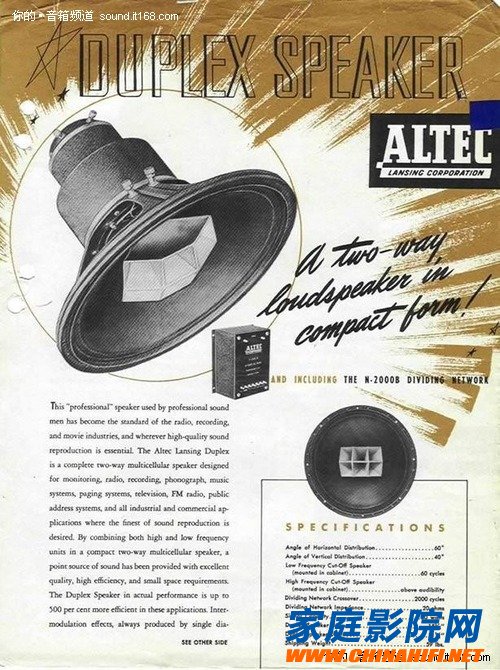
â–²Altec Lansing 604 horn prototype
We should pay attention to the two very famous speaker systems that Lansing perfected with Altec in those years. One of them was the 1943 604 coaxial horn, which successfully combined a small multi-grid horn with a 15-inch bass. The other is the "A-4 Theater Speaker" jointly developed by John Silard. This large two-way speaker was originally used in the theater, up to 8 feet, and the low speaker is not open rear. The A-4's horn load midrange combines with a low frequency open box design to increase the speaker's low frequency performance to an unprecedented level.
The high-frequency part of the A-4 is a compression driver with a conventional ring-slot phase plug and a 3-inch voice coil, model number 288. The woofer is a 15-inch unit of model 515 and the voice coil is also 3 inches in diameter. This is also the world's first woofer to use a flat wire voice coil. In these early speakers, the excitation coil structure was used to obtain a strong magnetic field, because at that time there was no permanent magnet material that could achieve the sufficient magnetic field strength required for the speaker. During the war, Altec Lansing has been working on an onboard magnetic detector, a high-sensitivity submarine detection system carried by anti-submarine aircraft. George Carrington quickly noticed a high-energy material used in this detector, AlNiCo V, which can be used in post-war horn design. In the war years, Lansing's energy and genius were all devoted to the loneliness of the drive and speaker system.
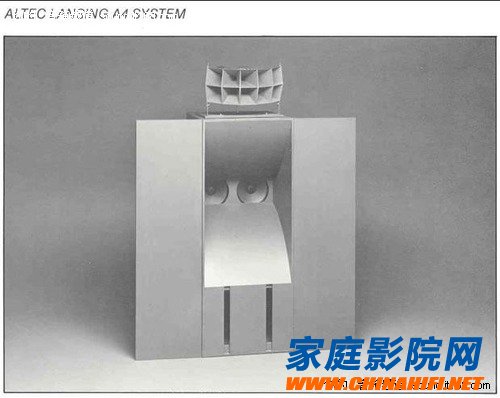
â–² 1945 A4 speaker prototype
In 1936, MGM Studios asked Lanxin to design a cinema speaker system called shearer Horn, which won a gold award. This is the first achievement of Lansing. Before that, the cinema speaker system was all western. Electric is monopolized in the three-way system, and Lansing's shearer horn system is a two-way system. It uses a medium-high horn and a 15-inch W-type horn. This horn design has become the production standard for large horns in the industry. Later, even Western Electric used this design replay effect to create a vocal voice of the talented audio designer. In the same year, Lanxin designed the Lconic two-way speaker, which made it a Hollywood movie industry. The most widely used monitor speakers, the horn horn system in cinemas around the world today is just a variant of Lconic.

â–²6900 McKinley Street after being acquired by Altec
In 1941, Lansing's business was declining and the company was sold to Altec, and the shareholders who formed Altec were formerly engineers of Western Electxic. Because the US government saw Western Electxic monopolize the recording industry in the film market, the following order was sold to the audio department. Therefore, Western Electxic sold the audio department to the engineering department in 1938, and its own good friends, so all the early design and production came from Western Electric, Lansing's five years at ALtec was the time when his creativity entered its peak. He created the 604 15å‹ coaxial unit, which is called the most popular and most popular coaxial unit in the history of sound. After half a century. After that, ALtec is still in production today. Lanxin has designed a classic theater sound speaker. These products designed by Lanxin are the best products of ALtec history. After Lanxin left, ALtec never designed better. Something is gone.
In the same year, when Altec Maintenance and Maintenance acquired the assets, business rights and trademarks of Lansing Manufacturing, Lansing promised that he would not start his own new company for at least five years. Although there has been disagreement between Lansing and Carrington, Lansing has faithfully fulfilled this commitment. It was not until 1946, when Altec acquired Lansing five years later, that he left Altec Lansing to start a new company. Everyone in Altec Lansing has blessed him. They have long known that Lansing will definitely leave after a regular five-year period.
JBL's stunning legendIt was on October 1, 1946, Lansing set up his own company, named James Blo. Lansing Audio Company, after the establishment of the company designed a series of units, when the cobalt magnetic technology is mature, Lanxin is just It is used as a horn magnet (the cobalt magnetic source is a high-energy magnet used in the radar during the Second World War in the United States, and is the best material for making the horn magnet). In 1949, the company first developed a family high-fidelity speaker. (D1004), this is the first time professional audio engineers have thought of applying professional audio technology and technology to home audio systems.
 â–²JBL first developed high-fidelity speaker (D1004)
â–²JBL first developed high-fidelity speaker (D1004) 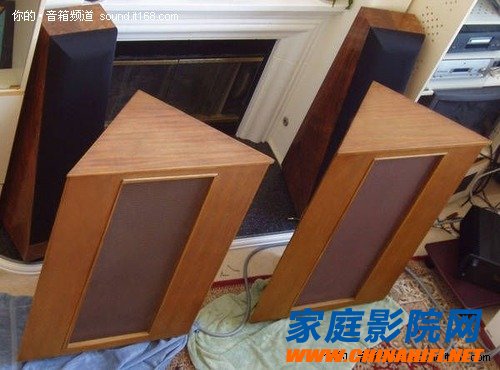
â–²JBL first developed high-fidelity speaker (D1004)
Although Lansing is a genius in design, it is extremely bad in managing business. Therefore, although the company’s three-year sound has excellent products, it is still heavily in debt. In the second half of 1949, the company’s current debt increased to 20,000. US dollars, (equivalent to 600,000 US dollars today), no money to pay to suppliers, on September 24, Lan Xin hanged himself on a pear tree in his pear garden, at the age of 47, a generation of genius to end this way, very regrettable, If the company goes bankrupt and closes, there will be no JBL in the future, but Lansing seems to have a hunch, so before the death, he bought life insurance from the insurance company. The beneficiary is his own company, so the company has enough liquidity after his death. The funds continue to operate, and the successor William Thomas is the most important person in the history of JBL development except Lan Xin.
In 1955, William Thomas took over JBL's first few years, and his products were all titled James Blow. Lansing Audio Company. These products are increasingly popular, making Altec Lanxin very jealous, and the name of Lanxin is People also had opinions. In the end, William Thomas referred to the company name as JBL. In the same year, he developed the famous Hartseld speaker series. This is the world's recognized ultimate fantasy equipment that sets music to reproduce new quality standards in the family. Time magazine praised JBL as the world's best speaker manufacturer. Fender, the famous instrument manufacturer, used JBL for its products, marking JBL's entry into the field of music sound reinforcement.
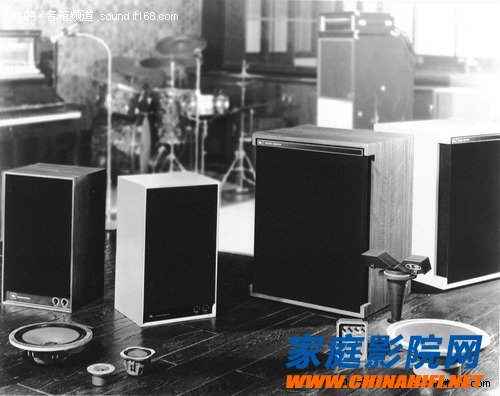
â–² JBL 4310 (left) and JBL 4320 (right)
In 1965, the JBL recording monitor speaker 4320 was very popular, and it was like breaking into the studios and pop music and performance venues around the world. This is the beginning of the JBL 4 series, which has improved its expertise and redesigned its appearance to suit the home environment. The L100, which was produced in 1969, produced and sold 250,000 pairs in the 1970s.
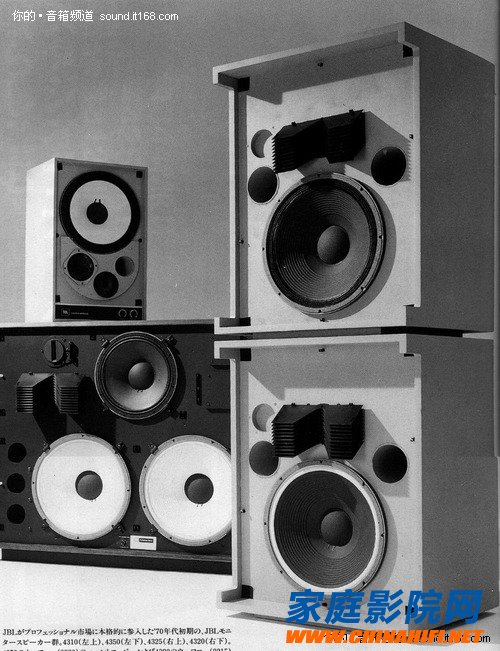
â–²JBL 4320 (right)
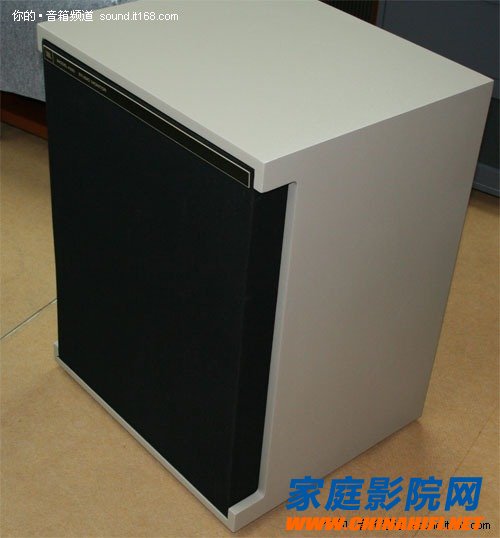
â–²JBL 4320 (right)
In 1969, William Thomas sold JBL to Sidney (Business Wizard) Harman (in the 1950s, he started to build Harman. Carton, started calling for the company, and finally made the company public). A deep understanding of the HI-FI market has greatly improved the sales of JBL.
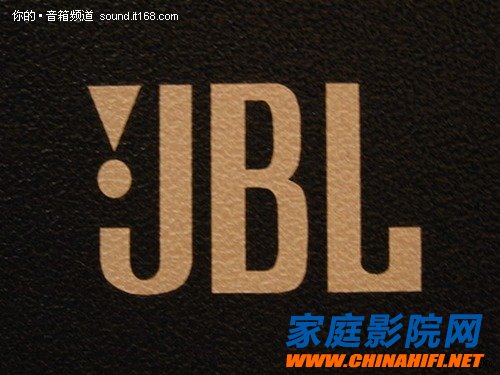
â–²JBL
In 1976, the studio occupancy rate was over 70%.
In 1977, Harman sold JBL to a food-making company for $100 million.
In 1980, after Harman bought it back from his hands, JBL created a series of glory.
In 1983, George and Lucas chose JBL as the first THX-certified speaker series designed by the theater. Today, more than 80% of THX-certified theaters use JBL speakers.
In 1984, JBL revolutionized the development of titanium dome tweeter technology for home speakers. In high-frequency performance, titanium is lighter than paper and can make the fastest and accurate music signal than steel. Good reaction.
In 1985, the flagship DD5500 was named the best product of the year.
In 1989, the American Directors' Association was extensively screened and selected JBL speakers as reference speakers for its headquarters building.
In 1991, JBL's famous K2 system was again named the best of the year.
In 1993, the THX-certified home theater system was developed.
In 1997, the complete ESC300 home theater system was created.
In 1998, the TIK series was developed. In the 21st century, the K2 9800 and 4348 were awarded the Best and Best Value Award of the "Stereo" magazine of the year. This is the first time in the history of the magazine that the most important award was won by the same brand. In the same year, in the history of Japan, the most Among the valuable products, JBL ranks in the top two.
Tower Air Fryer,Air Fryer 3.5L,Digital Air Fryers,Industrial Air Fryer
Ningbo Anbo United Electric Appliance Co.,ltd , https://www.airfryerfactory.com